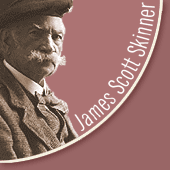




Please click any thumbnail image to view the full details.
There are 900 entries.
prev 10 | 47 > 48 > 49 > 50 > 51 > 52 > 53 > 54 > 55 > 56 | next 10 of 90 pages
| Image | Title | Item Description |
|---|---|---|
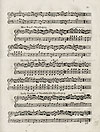 JSS0523 |
Mill O' Tiftie's Annie, Miss Boyd's Strathspey, Ha'd the Cradle Rockin, Lady Dunbar of Northfield's Strathspey | The second part of Mill o' Tifty's Annie (see JSS0523). The other tunes are William Christie of Monquhitter's own published compositions (see JSS0520, JSS0521, and others above. In common with Scott Skinner and others, Christie named many tunes after titled persons, or landowners, such as Lady Dunbar. Christie may have taught dancing to these individuals, or their children, or servants. By the 'Old' jig 'Ha'd the Cradle Rockin', Aberdeen fiddle music expert J. Murdoch Henderson (1902-1972), wrote '_Ja[me]s Paterson's MS' perhaps to compare this version with one there (the Paterson MS is also in Aberdeen University library). |
 JSS0524 |
Page 1 of 2, Mrs Garden Campbell of Troup and Glenlyon's Strathspey | One of the tunes from the manuscript that William Christie of Monquhitter prepared for his publishers (mentioned above in letters from his grandson, William Christie, JSS0512, JSS0513, JSS0514). 'Communicated by Dr. Stewart' usually means that the named person collected the tune. To pass this 'Old Ga[e]lic Air' on to Christie, the Doctor would first have had to learn it. He could learn it by ear, from another player, or a singer, or he could write it down from a manuscript. 'Communicated' sometimes meant that the person composed it herself, or himself, but was too modest to say so publicly. |
 JSS0525 |
Page 2 of 2, Mrs Garden Campbell of Troup and Glenlyon's Strathspey | The second part of JSS0525, one of the tunes (this was 'Communicated by Dr. Stewart') that William Christie of Monquhitter prepared for his publishers (mentioned above in letters from his grandson, William Christie, JSS0512, JSS0513, JSS0514). |
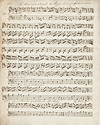 JSS0526 |
Page 1 of 3, including The Hessian's March or O gin I were far Gadie runs, Lassie an' Siller an' A's my ain, and Lady Dunbar of Northfield's Strathspey | One of the traditional North-east Scottish songs William Christie of Monquhitter collected. This version is from the manuscript he prepared for his publishers (mentioned above in letters from his grandson, William Christie, JSS0512, JSS0513, JSS0514). For the printed version, see JSS0522. |
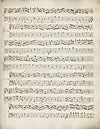 JSS0527 |
Page 2 of 3, including Lady Dunbar of Northfield's Strathspey, Lady Dunbar of Northfield's Reel, Mill o' Tifty's Annie, and Miss Boyd's Strathspey | One of the traditional North-east Scottish songs William Christie of Monquhitter collected. This version is from the manuscript he prepared for his publishers (mentioned above in letters from his grandson, William Christie, JSS0512, JSS0513, JSS0514). For the printed version, see JSS0522 |
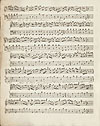 JSS0528 |
Page 3 of 3, including Miss Boyd's Strathspey, Hd'd the Cradle Rockin, Dr Guthrie'ss (Jun.r) Strathspey, and Thro' the Warld wou'd I gang wi' the Lad that loves me | The tunes here show a combination of tunes often found in traditional music manuscripts and printed collections. 'Miss Boyd', which starts on JSS0528, and 'Dr. Guthrie, are by William Christie. 'Ha'd [hold/stop] the Cradle', and 'Through the Warld', are considered 'Old', and would have been collected from other sources, either directly from singers or players, or from other collectors' manuscript. |
 JSS0529 |
Title page, Daniel Dow's Reells and Strathspeys | Daniel Dow's (1732-1783) first published collection. A fiddler, composer, teacher, concert organiser, Dow was b. Kirkmichael, Perthshire, d. Edinburgh. This collection of 'Thirty-seven' of his own compositions (c. 1776), appeared eight years before any from the more famous fiddler Niel Gow. Dow also published a fascinating Collection of Ancient Scots Music 'consisting of ports, salutations, marches or pibrachs [piobaireachd - the classical music of the Great Highland Bagpipe]', Edinburgh: n.d. [1778]. In the latter he recorded some of the music known to Irish musician Rorie Dall O' Caithean, harper to several titled Scottish families. The copy here has been used for research; the date and place of Dows's death has been written underneath, in an unknown hand, probably in the 19th century. |
 JSS0530 |
Sir Archibald Grant of Monemusk's Reel | Grant of Monymusk, Aberdeenshire, was a great 18th-century 'improver', who set up new and far-sighted farming methods. A President of the Aberdeen Musical Society (see JSS0652 - JSS0662), he employed a singing teacher, Thomas Channon, to teach his estate tenants to sing harmonised psalms, a skill almost unknown anywhere in Scotland. The laird was celebrated by a practice-verse - secular words to a sacred song - so it could be practised outwith the church: 'How lovely is thy dwelling-place, / Sir Archie Grant to me; / The home-park, and the policies, / How pleasant, Sir, they be.' |
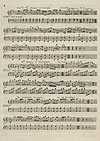 JSS0531 |
Honble Mrs Faser of Lovat's Strathspey, Mrs Fraser of Gortuleg's Favourite, and The Society's Favourite | The composer Simon Fraser of Knockie (1773-1862, b. Ardachy, near Fort Augustus, Highland, d. Inverness.) was a Scottish Gaelic-speaking fiddler and composer. He became a Captain in the Fraser Fencibles Regiment, serving in Ireland, then a sheep farmer, when he lost everything. This page of his compositions is from his first publication, 'Thirty Highland Airs, Strathspeys, &c (1794/5)'. His best known work, Airs and Melodies Peculiar to the Highlands of Scotland and the Isles (1816) (JSS0532) contains many Gaelic songs, collected from his father, set for violin and piano. He may have had lessons from Nathaniel Gow. |
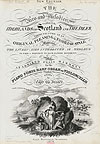 JSS0532 |
Title page, Airs and Melodies | This is the second edition of Simon Fraser of Knockie's 'Airs and Melodies Peculiar to the Highlands of Scotland and the Isles', originally published in 1816. Like Donald Dow (JSS0529, JSS0530), Fraser's (1773-1852) native language was Gaelic. He collected the melodies for many Gaelic songs. This edition was edited by his illegitimate son, Angus Fraser. Angus served in the Army for 25 years, rising to Colour Sergeant, and, after a medical discharge, returned home in 1845 to assist his father. The engraved figures of Niel Gow and a blind harper, as well as Fingal's Cave, were intended to relate the composer and his music to a wealth of the greatest of Scottish musicians. The same figures appear on Fraser's original frontispiece. |
prev 10 | 47 > 48 > 49 > 50 > 51 > 52 > 53 > 54 > 55 > 56 | next 10 of 90 pages


Historic Collections · Kings
College · Old Aberdeen · AB24 3SW
Tel:(0)44 1224 274312 · E-mail: scottskinner@abdn.ac.uk
Page design by IT Services Web Team